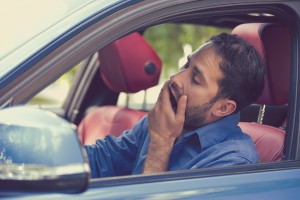 Nearly 21 percent of all car accidents involve a drowsy driver. Adults should be getting seven to eight full hours of sleep every night, yet many people suffer from stress, insomnia, or bad habits that prevent them from getting a full night’s rest. Driving while drowsy does more than make you yawn. By making sleep a priority, you can prevent accidents that could change your life forever.
Nearly 21 percent of all car accidents involve a drowsy driver. Adults should be getting seven to eight full hours of sleep every night, yet many people suffer from stress, insomnia, or bad habits that prevent them from getting a full night’s rest. Driving while drowsy does more than make you yawn. By making sleep a priority, you can prevent accidents that could change your life forever.
The Sleep-Deprived Brain
You need sleep to function. It’s as simple as that. A sleep-deprived brain starts to do some scary things. You might notice:
- Slowed Reaction Times: The cells in the brain start to slow down when you’re tired. Which means, it takes longer for your body to receive the signals it needs to respond to dangers on the road.
- Mood Changes: Increased anger and aggression are the most notable signs of sleep deprivation, putting you at risk for road rage.
- Decreased Reasoning Skills: Driving requires taking in a lot of information in a short amount of time. In an emergency, you might not be able to reason through and react quick enough to stay out of a car accident.
Some of the signs of drowsy driving are easy to recognize like frequent yawning or slow, heavy blinking. Others might catch you off guard because they happen so gradually. Signs of drowsiness include:
- Drifting out of your lane
- Missing your turn or exit
- Short-term memory loss where you don’t remember the last few miles traveled
If you’ve ever noticed these signs before, you were driving while drowsy.
Cost of Drowsy Driving
Drowsy drivers are 11.4 times more likely to get in an accident. Roughly 5,000 people each year lose their lives in fatigue-related accidents. That’s a high price to pay, not to mention the cost of medical bills, lost wages, and insurance costs for those who survive.
Car accident victims often end up with life-altering injuries like traumatic brain injury. While the brain is powerful, it’s also fragile. Some injuries may not show up right away. Changes in behavior, difficulty with speech, and memory problems often follow such injuries. In these cases, victims may need long-term medical care.
Accidents are preventable. First, recognize when you’re too tired to drive. When that happens, pull over and take a short 15-20 minute nap. Being a few minutes late is better than a car accident. Switch drivers, if you have that option.
How to Get Better Sleep
Long-term prevention of drowsy driving requires making sleep a priority. With seven full hours as your goal, you can start building habits that will keep you and your family safe. Good sleep hygiene includes:
- Consistent Bedtime: Your body is meant to follow a routine. Go to bed at the same time every day to help your brain know when it’s time to shut down.
- Establish a Bedtime Routine: If you have a hard time winding down at night, establish a routine to help the process along. A warm bath, reading a book, and doing light meditation are a few ideas to add to your routine. Anything that helps you relax is useful at bedtime.
- Shut Off the Screens: Televisions, e-readers, smartphones, and other electronics give off a light that’s bright enough to fool the brain into thinking it’s time to be awake. Shut screens off an hour before bedtime to give your brain time to shut down.
Ben DiMaggio is a researcher for the sleep science and health organization Tuck.com. Ben specializes in investigating how sleep, and sleep deprivation, affect public health and safety. He also investigates sleep products to see if they live up to the hype. Ben lives in Portland, Oregon. His worst sleep habit is checking his email right before bed.


